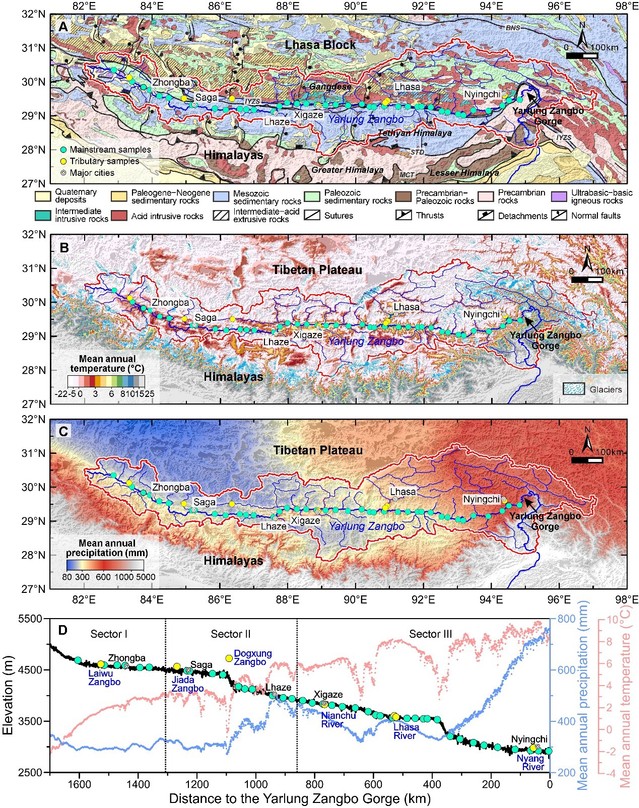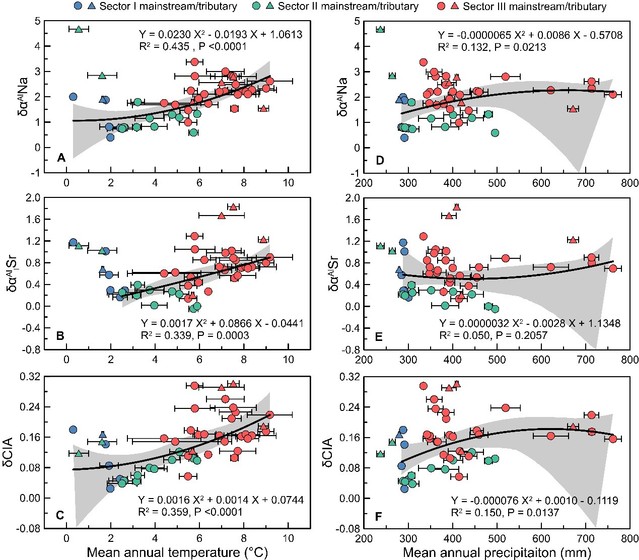Mingyang Yu 1, Zhifei Liu 1,*, Yulong Zhao 1, Baozhi Lin 1
1 State Key Laboratory of Marine Geology, Tongji University, Shanghai 200092, China
* Corresponding author.
Email: lzhifei@tongji.edu.cn
Abstract
Silicate weathering acts as a negative feedback that regulates the Earth's long-term climate by removing CO2 from the atmosphere. However, maintaining a close balance in the global carbon cycle requires a timely response of weathering to the changing climate. Here, we investigate major and trace element contents of both silt (<63 μm) and clay (<2 μm) fractions of surface sediments collected at high spatial resolution along the course of the Yarlung Zangbo river system on the Tibetan Plateau to study the sensitivity of silicate weathering intensity to climate. We isolate the true weathering signals by defining the δαAlE indices and δCIA to quantify the elemental fractionation between the clay and silt fractions. The results show increasing trends in δαAlCa, δαAlNa, δαAlSr, δαAlMg, and δCIA and a decreasing trend in δαAlLi downstream (eastward) along the 1700-m-long river course of the Yarlung Zangbo. These findings reveal an increase in silicate weathering intensity in response to increasing temperature and precipitation from the interior to the eastern edge of the Tibetan Plateau. Combined with correlation analysis, we further infer that temperature is the primary controlling factor of silicate weathering intensity on the Tibetan Plateau, whereas precipitation plays a secondary role. Our study shows that silicate weathering intensity can respond sensitively to temperature changes in a low-temperature environment (∼0–10 °C) on the Tibetan Plateau at the present-day timescale. This highlights the potential of the Tibetan Plateau to buffer against the ongoing warming climate by enhancing chemical weathering.

Fig.1 Geology, mean annual temperature and rainfall distribution in the Yarlung Tsangpo River basin

Fig.2 Correlation of silicate weathering indicators with mean annual temperature and annual rainfall in the Yarlung Tsangpo River Basin
Full Article: https://doi.org/10.1016/j.gloplacha.2025.104819


